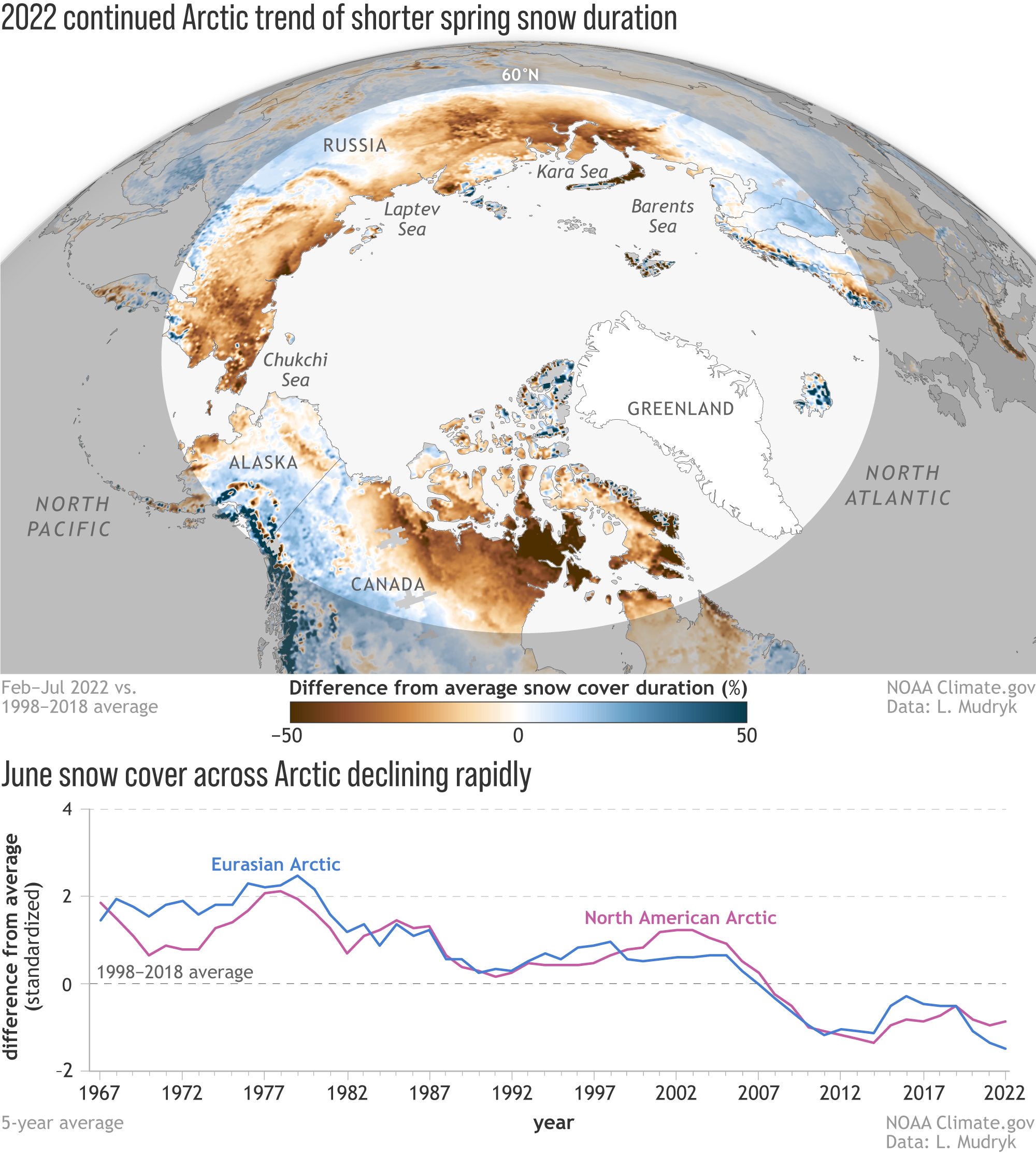Early snowmelt across Arctic in 2022 continues long-term pattern
Details
Temperatures in the Arctic are warming more than twice as quickly as the global average, and snow extent is responding in predictable ways. Total winter snow accumulation hasn’t changed over the modern period of observations—Arctic winter temperatures still fall well below freezing so snow continues to accumulate—but it melts significantly faster in the spring. According to snow experts in the Arctic Report Card: Update for 2022, conditions in 2021–22 followed that pattern.
This map shows how the number of snow-free days in the spring of 2022 (total days during February–July) compared to the 1999–2018 average. Areas where snow lasted longer (fewer snow-free days than average) are blue. Areas where snow melted earlier (more snow-free days than average) are brown.
Although snow persisted longer than average at lower latitudes in parts of Eurasia and North America, shorter snow duration occurred across most Arctic land areas. Below-average springtime snow duration was especially pronounced in eastern Siberia, south of the Kara Sea, and in the central Canadian Arctic.
Derived from satellite observations, the observational record for Arctic snow cover spans 56 years. In the spring of 2022, snow cover extent across the North American Arctic was second-lowest on record, while Eurasian Arctic snow cover extent was third-lowest. According to the Arctic Report Card authors, North American June snow cover extent has fallen below the long-term average every single year since 2008. Over the same period, Eurasian June snow cover extent has fallen below the long-term average every year except 2017.
How long into the warm season the ground remains snow-covered has a large influence on streamflows and surface water, soil moisture and plant growth, and surface heating and permafrost thaw. A lack of spring snow cover may also negatively affect animals that change their coats or plumage with the seasons, leaving them repeatedly “mismatched” to their environment and increasing their vulnerability to predators.
Reference
Mudryk, L., Elias Chereque, A., Derksen, C., Luojus, K., Decharme, B. (2022). Terrestrial snow cover. Arctic Report Card: Update for 2022.
